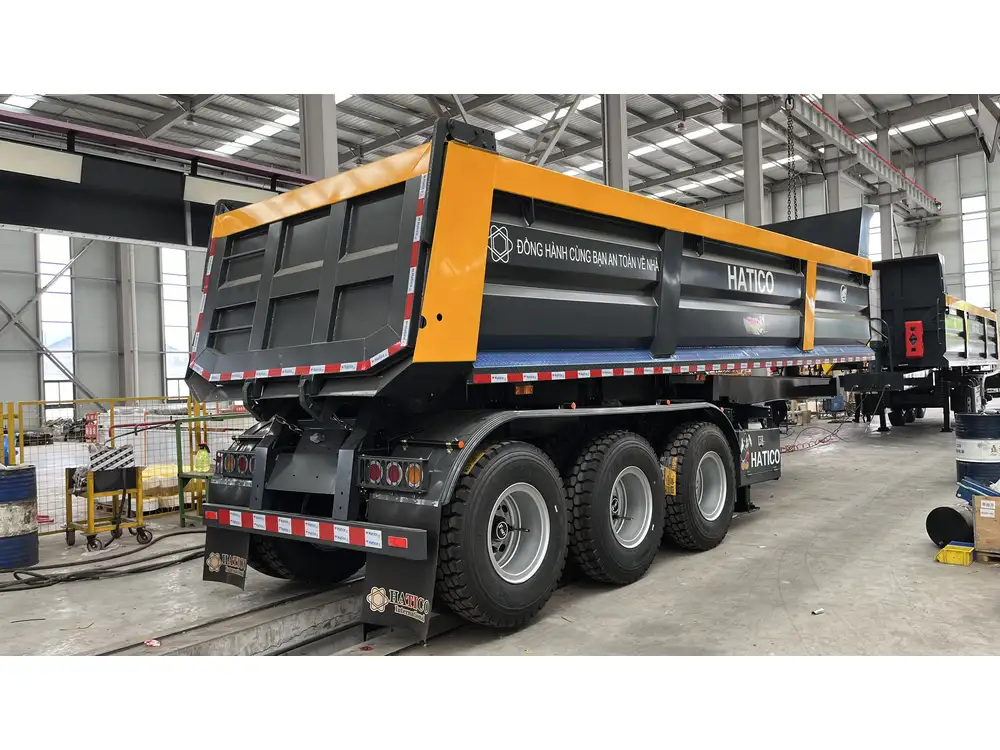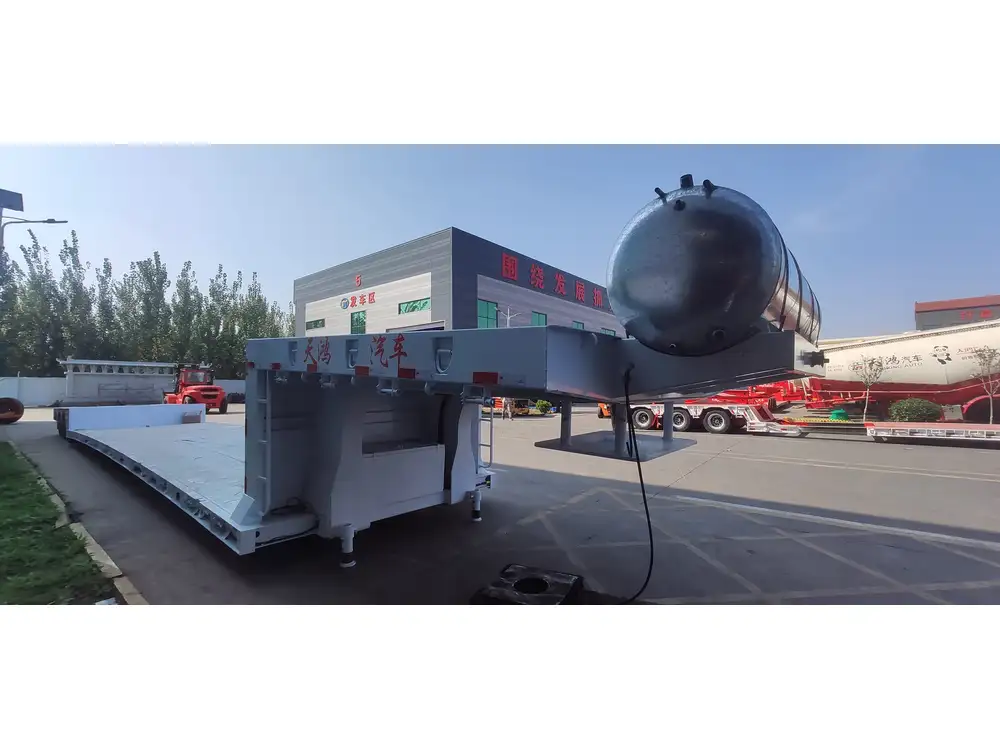Introduction: The Importance of Knowing Your Equipment’s Weight
For businesses involved in construction, landscaping, or any industry that requires heavy hauling, knowing the specifications of your equipment is critical. Among the multitude of machinery and tools, dump trailers are indispensable for transporting materials like gravel, dirt, and debris. An essential piece of information in selecting and operating dump trailers is understanding their weight. In this article, we’ll elucidate how much an 18-foot dump trailer weighs, the factors influencing this weight, and considerations for purchasing and utilizing one effectively.
What Is an 18-Foot Dump Trailer?
An 18-foot dump trailer is a versatile type of trailer designed to facilitate the easy transport of heavy materials. These trailers often feature hydraulic systems that enable the dump bed to tilt, allowing for quick unloading of cargo. Due to their capacity and size, 18-foot trailers are commonly used in various applications, from commercial construction sites to private land clearing.

Key Specifications of Dump Trailers
| Feature | Description |
|---|---|
| Length | 18 feet |
| Weight Capacity | Ranges from 10,000 to 14,000 lbs depending on construction |
| Bed Height | Standard sizes range from 48 to 60 inches |
| Towing Mechanism | Typically utilize a hitch system for towing |
| Construction Materials | Steel or aluminum options available |
Average Weight of an 18-Foot Dump Trailer
The weight of an 18-foot dump trailer can vary based on several factors, including construction materials, design, and additional features. On average, an empty 18-foot dump trailer weighs approximately 3,000 to 5,000 pounds. It’s crucial to understand that this figure can fluctuate depending on specific configurations and options tailored to user requirements.
Factors Influencing the Weight
Construction Material:
- Steel Trailers: Generally heavier, providing greater durability but also increasing the overall weight. A steel 18-foot dump trailer may weigh between 4,500 to 5,500 pounds.
- Aluminum Trailers: Lightweight yet robust. Typically, they can weigh as little as 3,000 to 4,200 pounds, offering better fuel efficiency when towing.
Additional Features:
- Hydraulic Systems: Trailers equipped with advanced hydraulic systems for better dumping mechanism can add additional weight.
- Safety Features: Built-in brakes, reinforced sides, and other safety components will also influence the overall weight.
Design Variations:
- Single Axle vs. Tandem Axle: Tandem axle trailers, which provide better weight distribution and towing stability, tend to be heavier than single axle models due to the additional structural components.

Calculating the Weight Capacity
Weight capacity is vital in understanding how much load an 18-foot dump trailer can handle. The Gross Vehicle Weight Rating (GVWR) indicates the maximum weight of the trailer plus its cargo and should never be exceeded.
Typical Weight Capacities
| Trailer Type | Empty Weight | Max Payload Capacity | GVWR |
|---|---|---|---|
| Steel Single Axle | 3,800 lbs | Up to 7,200 lbs | 11,000 lbs |
| Steel Tandem Axle | 5,000 lbs | Up to 9,000 lbs | 14,000 lbs |
| Aluminum Single Axle | 3,200 lbs | Up to 6,800 lbs | 10,000 lbs |
| Aluminum Tandem Axle | 4,000 lbs | Up to 8,000 lbs | 12,000 lbs |
Why Weight Capacity Matters
Knowing your dump trailer’s weight limit is crucial for ensuring safety and avoiding potential damage to the equipment. Exceeding this limit can lead to:
- Increased Wear and Tear: Overloading can damage the structural integrity of the trailer.
- Increased Stopping Distance: Heavier loads may impair braking efficiency, increasing the risk of accidents.
- Potential Legal Issues: Many jurisdictions have legal weight limits for towing trailers, and exceeding them could result in fines and penalties.

Optimal Loading Practices for 18-Foot Dump Trailers
1. Distributing the Load
Properly distributing weight in an 18-foot dump trailer is vital for safe towing. Here’s how you can achieve optimal weight distribution:
- Center Loading: Place heavier items in the center of the trailer to maintain balance.
- Avoid Rear-Heavy Loads: Distribute the load evenly to prevent swaying and instability while driving.
2. Understanding Material Weight
Different materials feature varying weights, which influences how much can be safely loaded. Knowing the weight of common materials can prevent overloading:
| Material | Weight per Cubic Yard | Example Load for 18-Ft Trailer (assuming max payload) |
|---|---|---|
| Gravel | 1,500 lbs | ~6 cubic yards |
| Sand | 2,000 lbs | ~4.5 cubic yards |
| Top Soil | 1,200 lbs | ~7.5 cubic yards |
| Concrete | 3,000 lbs | ~2.5 cubic yards |

Safety Considerations When Towing
Safety cannot be understated while towing dump trailers. Here are key considerations to enhance safe towing with an 18-foot dump trailer:
- Check the Hitch: Ensure the hitch is properly rated for the trailer’s weight and securely fastened.
- Use Proper Towing Capacity: Ensure your vehicle’s towing capacity exceeds the combined weight of the trailer and its load.
- Maintain Lighting: Always check and maintain lights and brake systems for visibility and signaling.
Regulatory Compliance and Legal Weight Limits
Understanding the legalities surrounding trailer weight limits is crucial for compliance and safe towing. Depending on your location, weight limits for trailers can vary.
Key Regulations to Consider
- DOT Regulations: Familiarize yourself with Department of Transportation regulations concerning trailer usage.
- State Regulations: Different states have varying rules about maximum weight that can be towed; ensure compliance to avoid fines.

Conclusion: The Essential Takeaway
Understanding how much an 18-foot dump trailer weighs, along with its capacity and safety considerations, is essential for anyone involved in heavy hauling tasks. An optimal balance of weight, load distribution, and regulatory compliance not only enhances operational efficiency but also safeguards against potential risks.
In conclusion, whether you’re in the market to purchase an 18-foot dump trailer or are currently using one, leverage this knowledge for optimal performance and safety. Always remember that protecting your investment and ensuring the safety of operations is paramount in this line of work. By remaining informed about trailer specifications and adhering to best practices, you can maximize productivity while minimizing risks associated with heavy hauling.



